Related Research Articles

Freemasonry or Masonry refers to fraternal organisations that trace their origins to the local guilds of stonemasons that, from the end of the 14th century, regulated the qualifications of stonemasons and their interaction with authorities and clients. Modern Freemasonry broadly consists of two main recognition groups: Regular Freemasonry, which insists that a volume of scripture be open in a working lodge, that every member professes belief in a Supreme Being, that no women be admitted, and that the discussion of religion and politics do not take place within the lodge; and Continental Freemasonry, which consists of the jurisdictions that have removed some, or all, of these restrictions.
Hundreds of conspiracy theories about Freemasonry have been described since the late 18th century. Usually, these theories fall into three distinct categories: political, religious, and cultural. Many conspiracy theories have connected the Freemasons with worship of the devil; these ideas are based on different interpretations of the doctrines of those organizations.
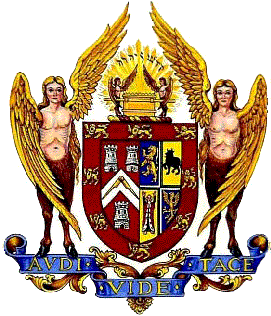
The United Grand Lodge of England (UGLE) is the governing Masonic lodge for the majority of freemasons in England, Wales, and the Commonwealth of Nations. Claiming descent from the Masonic Grand Lodge formed 24 June 1717 at the Goose & Gridiron Tavern in London, it is considered to be the oldest Masonic Grand Lodge in the world, together with the Grand Lodge of Scotland, and the Grand Lodge of Ireland.
Jahbulon or Jabulon is a word which is allegedly used in some rituals of Royal Arch Masonry and derivations thereof.
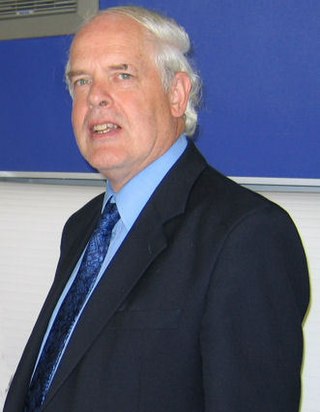
Robert Lomas is a British writer, physicist and business studies academic. He writes primarily about the history of Freemasonry as well as the Neolithic period, ancient engineering, and archaeoastronomy.

The Knights Templar, full name The United Religious, Military and Masonic Orders of the Temple and of St John of Jerusalem, Palestine, Rhodes and Malta, is a fraternal order affiliated with Freemasonry. Unlike the initial degrees conferred in a regular Masonic Lodge, which only require a belief in a Supreme Being regardless of religious affiliation, the Knights Templar is one of several additional Masonic Orders in which membership is open only to Freemasons who profess a belief in Christianity. One of the obligations entrants to the order are required to declare is to protect and defend the Christian faith. The word "United" in its full title indicates that more than one historical tradition and more than one actual order are jointly controlled within this system. The individual orders 'united' within this system are principally the Knights of the Temple, the Knights of Malta, the Knights of St Paul, and only within the York Rite, the Knights of the Red Cross.
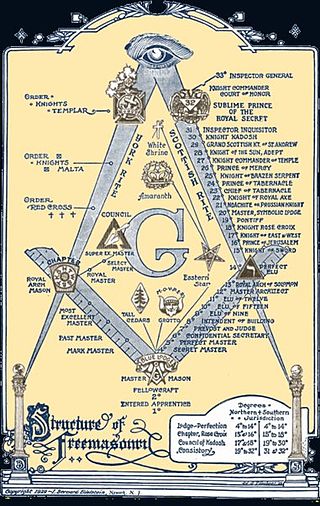
There are many organisations and orders which form part of the widespread fraternity of Freemasonry, each having its own structure and terminology. Collectively these may be referred to as Masonic bodies, Masonic orders, Concordant bodies or appendant bodies of Freemasonry.

There are Masonic degrees named after the Knights Templar but not all Knights Templar Orders are Masonic.
The Knight Kadosh is a Freemasonic degree or ceremony of initiation performed by a number of Supreme Councils of the Ancient and Accepted Scottish Rite of Freemasonry. It is the Thirtieth Degree of the Southern Jurisdiction of the Scottish Rite for the United States of America, and the Ancient and Accepted Scottish Rite of Freemasonry of Canada. The Northern Masonic Jurisdiction of the Scottish Rite, does not currently confer a degree with the name Knight Kadosh. Instead its thirtieth degree is entitled "Grand Inspector."
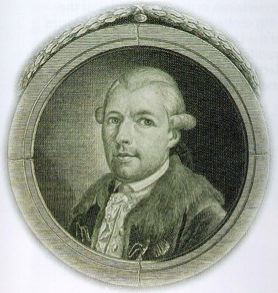
The Illuminati is a name given to several groups, both real and fictitious. Historically, the name usually refers to the Bavarian Illuminati, an Enlightenment-era secret society founded on 1 May 1776 in Bavaria, today part of Germany. The society's stated goals were to oppose superstition, obscurantism, religious influence over public life, and abuses of state power. "The order of the day," they wrote in their general statutes, "is to put an end to the machinations of the purveyors of injustice, to control them without dominating them." The Illuminati—along with Freemasonry and other secret societies—were outlawed through edict by Charles Theodore, Elector of Bavaria, with the encouragement of the Catholic Church, in 1784, 1785, 1787 and 1790. During subsequent years, the group was generally vilified by conservative and religious critics who claimed that the Illuminati continued underground and were responsible for the French Revolution.
The original historic Knights Templar were a Christian military order, the Order of the Poor Fellow Soldiers of Christ and of the Temple of Solomon, that existed from the 12th to 14th centuries to provide warriors in the Crusades. These men were famous in the high and late Middle Ages, but the Order was disbanded very suddenly by King Philip IV of France, who took action against the Templars in order to avoid repaying his own financial debts. He accused them of heresy, ordered the arrest of all Templars within his realm, put the Order under trial and many of them burned at the stake. The dramatic and rapid end of the Order led to many stories and legends developing about them over the following centuries. The Order and its members increasingly appear in modern fiction, though most of these references portray the medieval organization inaccurately.

The Grand Lodge of Free & Accepted Masons of Indiana is one of two statewide organizations that oversee Masonic lodges in the state of Indiana. It was established on January 13, 1818. The Grand Lodge of Indiana's offices and archives are located in the Indianapolis Masonic Temple. The historically black Most Worshipful Prince Hall Grand Lodge of Indiana F&AM is the second regular Masonic grand lodge in the state, and it was originally established in 1856 as the Independent Union Grand Lodge of Free and Accepted Masons of the State of Indiana. The two grand lodges agreed to mutual recognition in May 1998, and they jointly share sovereignty over the Masonic fraternity in Indiana.

Masonic ritual is the scripted words and actions that are spoken or performed during the degree work in a Masonic lodge. Masonic symbolism is that which is used to illustrate the principles which Freemasonry espouses. Masonic ritual has appeared in a number of contexts within literature including in "The Man Who Would Be King", by Rudyard Kipling, and War and Peace, by Leo Tolstoy.
John J. Robinson was an American author, best known as the author of Born in Blood: The Lost Secrets of Freemasonry. He is also credited as being the "founding visionary" of the Masonic Information Center run by the Masonic Service Association of North America. He was a member of the Medieval Academy of America, the Organization of American Historians, and the Royal Over-Seas League of London.

Thomas Smith Webb was the author of Freemason’s Monitor or Illustrations of Masonry, a book which had a significant impact on the development of Masonic Ritual in America, and especially that of the York Rite. Webb has been called the "Founding Father of the York or American Rite" for his efforts to promote those Masonic bodies.
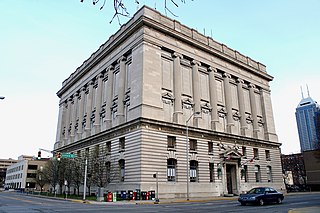
The current Indianapolis Masonic Temple, also known as Indiana Freemasons Hall, is a historic Masonic Temple located at Indianapolis, Indiana. Construction was begun in 1908, and the building was dedicated in May 1909. It is an eight-story, Classical Revival style cubic form building faced in Indiana limestone. The building features rows of engaged Ionic order columns. It was jointly financed by the Indianapolis Masonic Temple Association and the Grand Lodge of Free and Accepted Masons of Indiana, and was designed by the distinguished Indianapolis architectural firm of Rubush and Hunter.

The Larmenius Charter or Carta Transmissionis is a coded Latin manuscript purportedly created by Johannes Marcus Larmenius in February 1324, detailing the transfer of leadership of the Knights Templar to Larmenius after the death of Jacques de Molay. It also has appended to it a list of 22 successive Grand Masters of the Knights Templar after de Molay, ending in 1804, the name of Bernard-Raymond Fabré-Palaprat appearing last on the list. The document is written in a supposed devised ancient Knights Templar Codex. Actually in Freemason custody, the document is kept at the Mark Masons Hall in London. Some researchers have concluded that it is a forgery, while others assert its authenticity.
Freemasonry in Germany started in several places during the second quarter of the Eighteenth century. After the extinction of the Rite of Strict Observance, which had a wide following and claimed Templar origins for its higher degrees, the several Grand Lodges in Germany defied all attempts at unification, although a largely ineffectual central organisation came into being with the unification of Germany. During the 1920s Freemasons were harassed alongside Jews by those taken in by the Protocols of the Elders of Zion, and blamed for the German surrender of 1918. This culminated with the suppression of Freemasonry by the Nazis in 1935, with many Masons in Germany and occupied countries being executed or sent to concentration camps. Freemasonry returned to Germany after World War Two. A single central body now represents five "regular" Grand Lodges. Liberal, women's, and mixed lodges also exist.
The Supreme Council, Scottish Rite, Northern Jurisdiction oversees the Scottish Rite of Freemasonry in fifteen states: Connecticut, Delaware, Illinois, Indiana, Maine, Massachusetts, Michigan, New Jersey, New Hampshire, New York, Ohio, Pennsylvania, Rhode Island, Wisconsin and Vermont. This territory has existed since 1827 when the NMJ gained jurisdiction "over the then 14 states situated east of the Mississippi and north of the Mason-Dixon Line. Wisconsin was not yet a state, but part of Michigan."
The Society of Blue Friars (SBF) is a Masonic organization established in 1932 with the explicit purpose of recognizing Masonic authors. It is widely regarded as one of the smallest and most distinctive appendant bodies within Freemasonry.
References
- ↑ "Officers of The Masonic Society". Archived from the original on 2014-10-27. Retrieved 2014-10-17.
- ↑ Freemasons For Dummies Archived June 24, 2007, at the Wayback Machine For Dummies Store. accessed October 3, 2011.
- ↑ Anderson, William Henry (Spring 2010). "SSCI E-132 - Conspiracy" (PDF). dcewww.harvard.edu. Harvard University. Archived from the original (PDF) on 2011-01-07. Retrieved 2010-06-30.
- ↑ "Christopher Hodapp - Author's website". Archived from the original on 2009-02-02. Retrieved September 23, 2020.
- ↑ "Journals - Scottish Rite of Freemasonry, S.J., U.S.A." Scottish Rite of Freemasonry, S.J., U.S.A. Retrieved 2018-11-04.
- ↑ "Dwight L. Smith Lodge of Research U.D." www.facebook.com. Retrieved 2019-05-24.